Introduction: Why Transitioning Houseplants Matters
Every summer, my houseplants back indoors enjoy a well-deserved vacation outdoors. They soak up the sun, benefit from fresh air, and often grow more vigorously than they ever could indoors. But when fall approaches and the nights dip below 50°F (10°C), I know it’s time to carefully bring them back inside.
Here’s the catch: moving houseplants indoors isn’t as simple as placing them near a window. If you don’t transition them correctly, you risk pests, leaf drop, or even losing the plant altogether. After years of trial and error, I’ve developed seven essential steps that ensure my plants remain healthy and thriving through the colder months.
Let’s dive into the exact strategies I use every single year to bring my green friends safely indoors.
1. Hunt for Sneaky Pests Before They Move In
When I bring my houseplants indoors, the first thing I do is play detective. Outdoor environments are paradise for pests like:
- Aphids
- Spider mites
- Mealybugs
- Fungus gnats
- Whiteflies
These insects love to hitch a ride indoors, and once inside, they can spread rapidly among your plant collection.
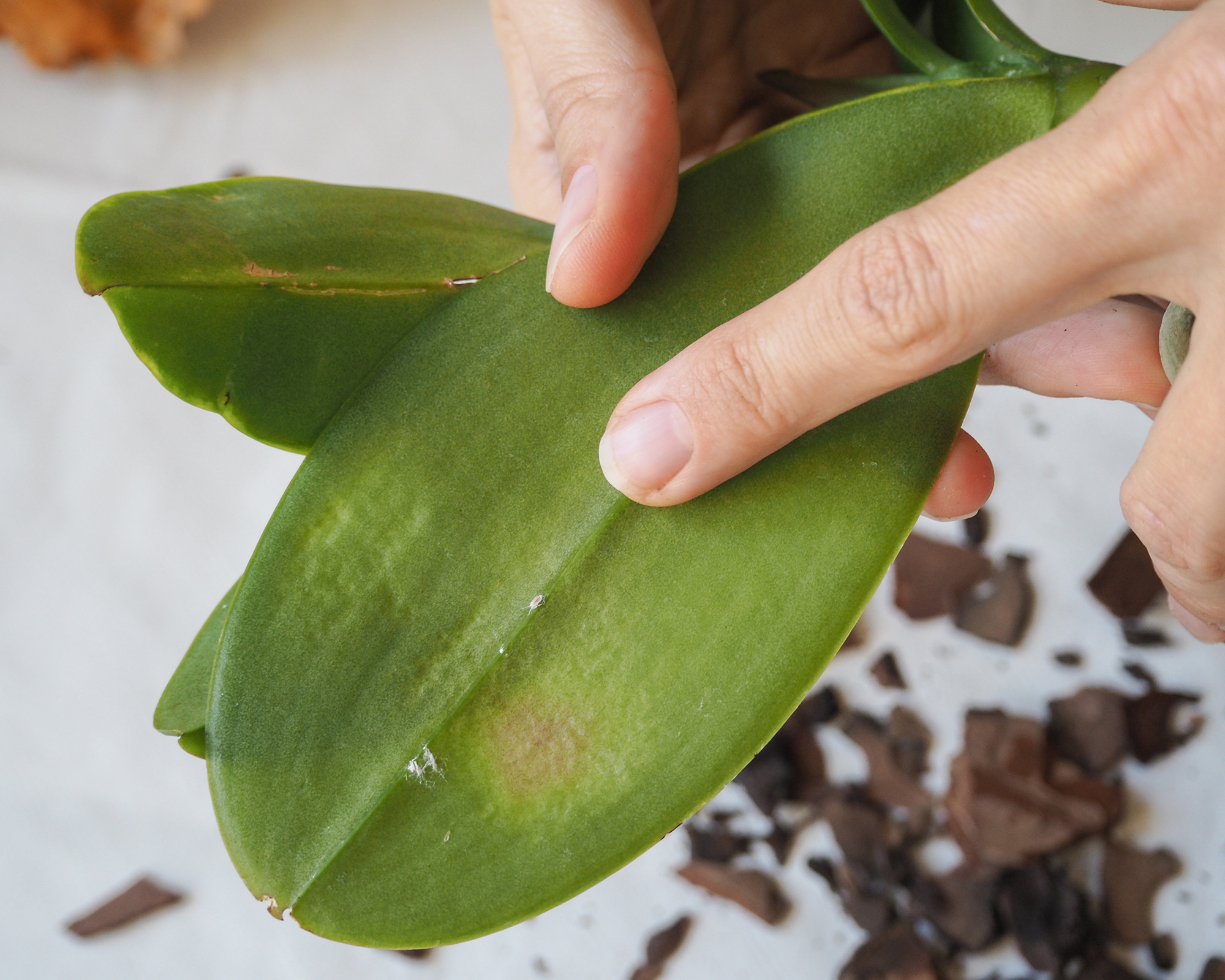
My Process for Pest Detection:
- Check undersides of leaves with a magnifying glass.
- Inspect stems and soil surfaces where eggs often hide.
- Look under pots and saucers — tiny slugs and bugs like to hide there.
If I find pests, I:
- Rinse the plant thoroughly with a garden hose.
- Treat with insecticidal soap or neem oil spray.
- Repeat the treatment after a few days to ensure all pests are gone.
2. Ease Plants Into Indoor Life Gradually
Plants are sensitive to sudden changes. If I drag them inside immediately, they sulk — dropping leaves, losing color, or even stalling growth.
My Acclimation Method:
- Step 1: Move plants into a shaded outdoor corner for 3–4 days.
- Step 2: Place them under a patio awning or near a window for another few days.
- Step 3: Finally, bring them indoors to their permanent spot.

This gradual shift mimics the reduced sunlight indoors and helps them adjust without stress.
If natural light isn’t enough indoors, I use LED grow lights to replicate the sunlight they’re used to.
👉 Think of this as plant “jet lag.” A gentle transition prevents shock and leaf loss.
3. Quarantine New Arrivals for Two Weeks
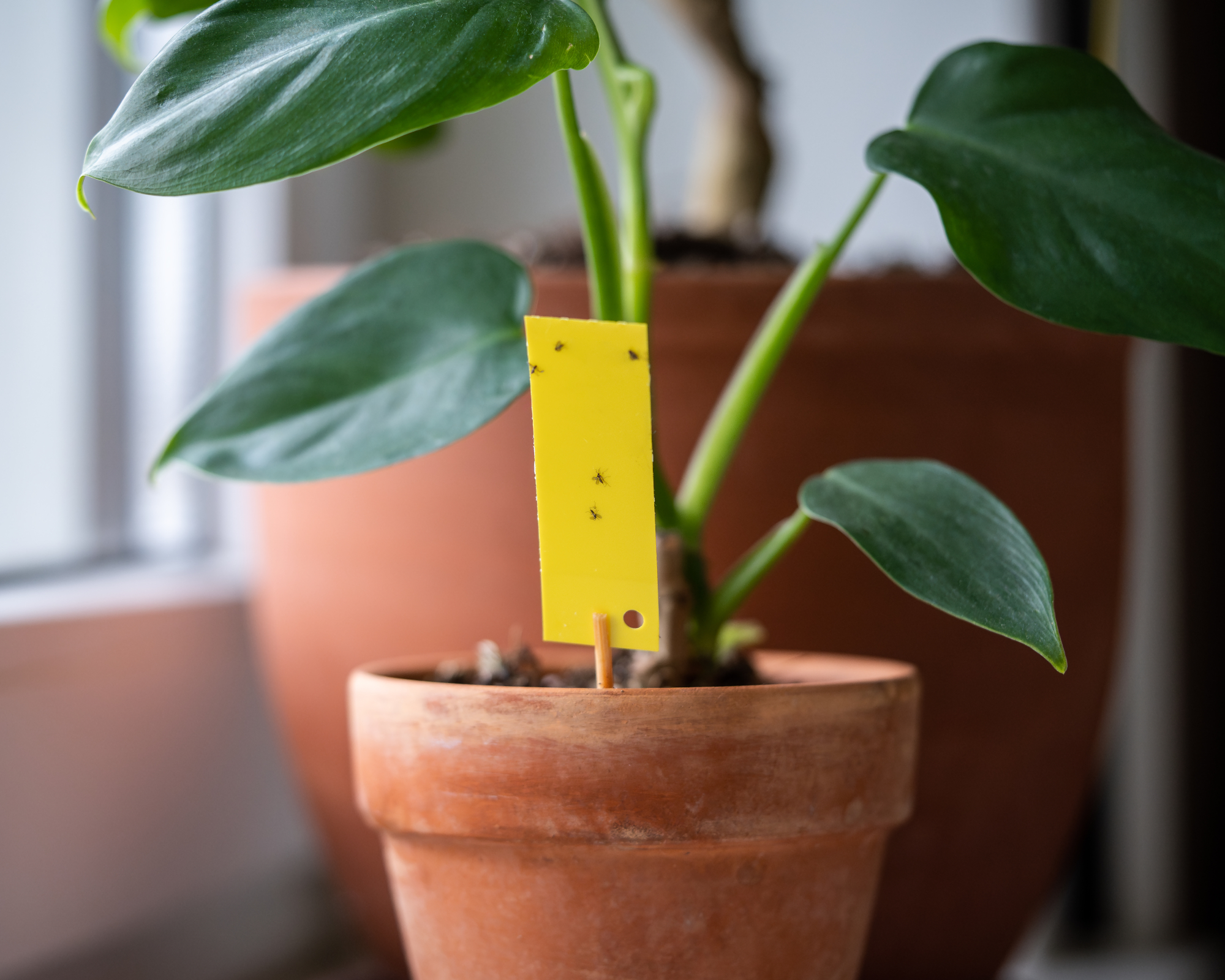
Even if a plant looks clean, pests can be sneaky. That’s why I always keep new or outdoor-returned plants in quarantine for about two weeks.
- I place them in a separate room away from my main plant collection.
- I use yellow sticky traps to monitor for flying pests like fungus gnats.
- After 14 days of monitoring, only the pest-free plants join the rest.
👉 It might feel tedious, but this step has saved my entire collection more than once.
4. Wipe Down and Clean the Leaves
After a summer outdoors, plant leaves are usually coated with dust, pollen, and grime. Dirty leaves reduce their ability to absorb light indoors.
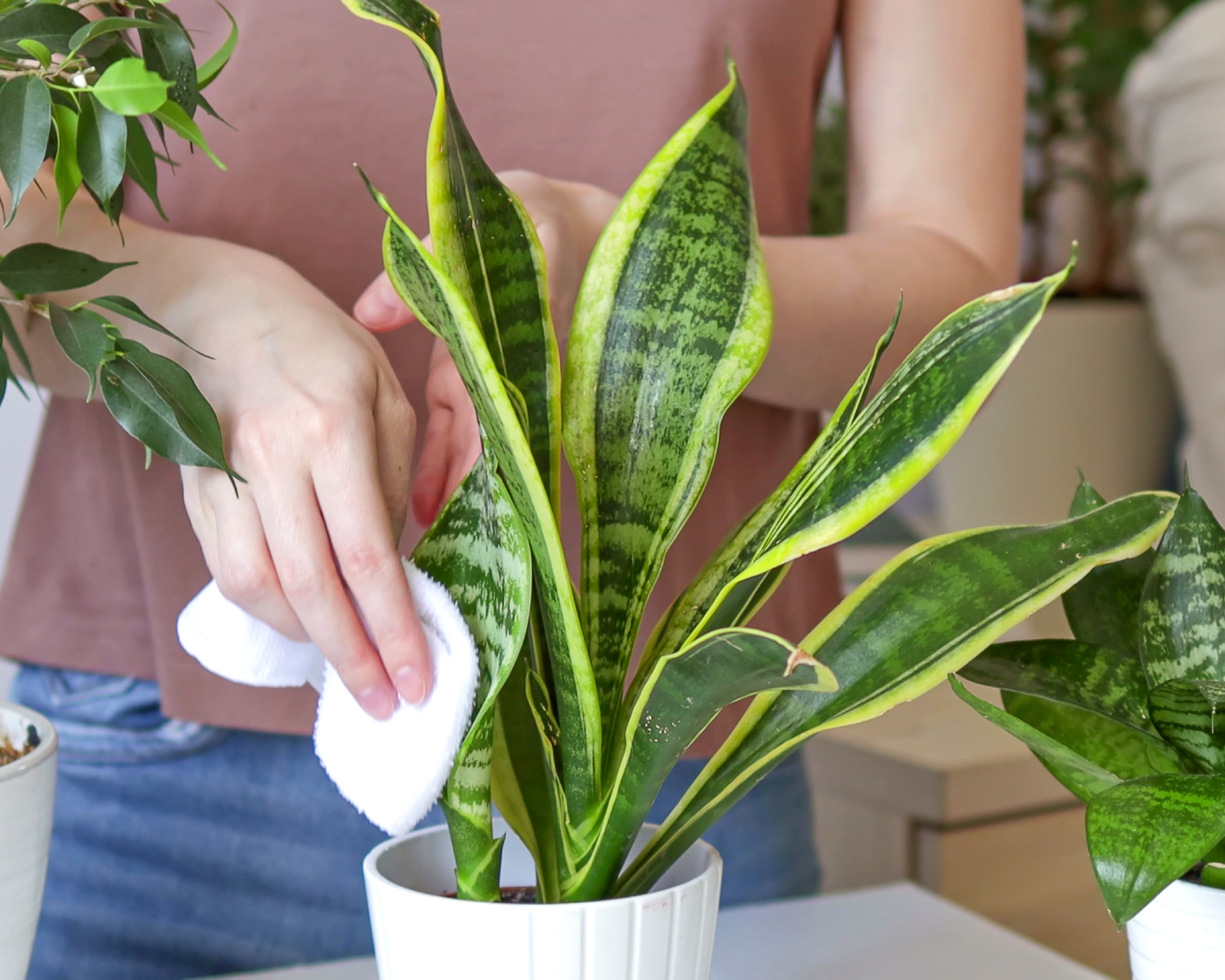
Cleaning Steps:
- Use a damp microfiber cloth to wipe each leaf.
- For large plants, I sometimes shower them with lukewarm water.
- Check for sticky residues (a sign of pests like scale or aphids).
If sticky spots are present, I use a mild soap solution to gently clean the leaves.
5. Give Plants a Neem Oil Spritz for Protection
Once clean, I give my plants a preventive neem oil treatment. Neem oil is a natural pesticide and fungicide that helps keep bugs away.
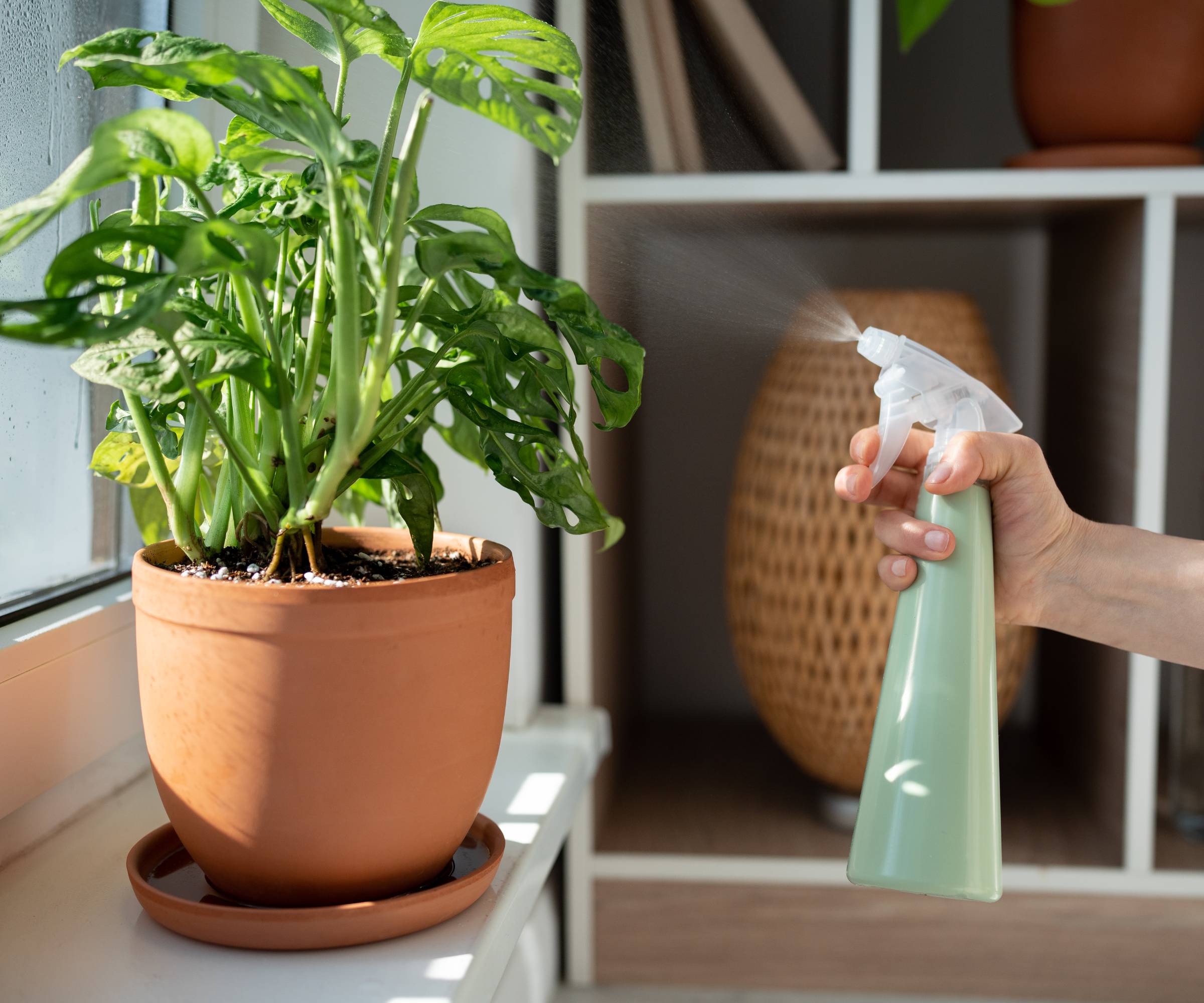
How I Do It:
- Mix 1 teaspoon neem oil + a few drops of dish soap + 1 quart of water.
- Mist the leaves (top and underside), stems, and lightly spray the soil.
- Apply outdoors or in a well-ventilated area.
Neem oil creates a protective barrier against pests like spider mites and fungus gnats.
👉 This step is especially important for tropical plants, which are pest magnets indoors.
6. Trim and Prune Houseplants Before Moving Inside
Summer often leaves plants a little overgrown. Weak, leggy, or dead growth not only looks untidy but can also invite pests.
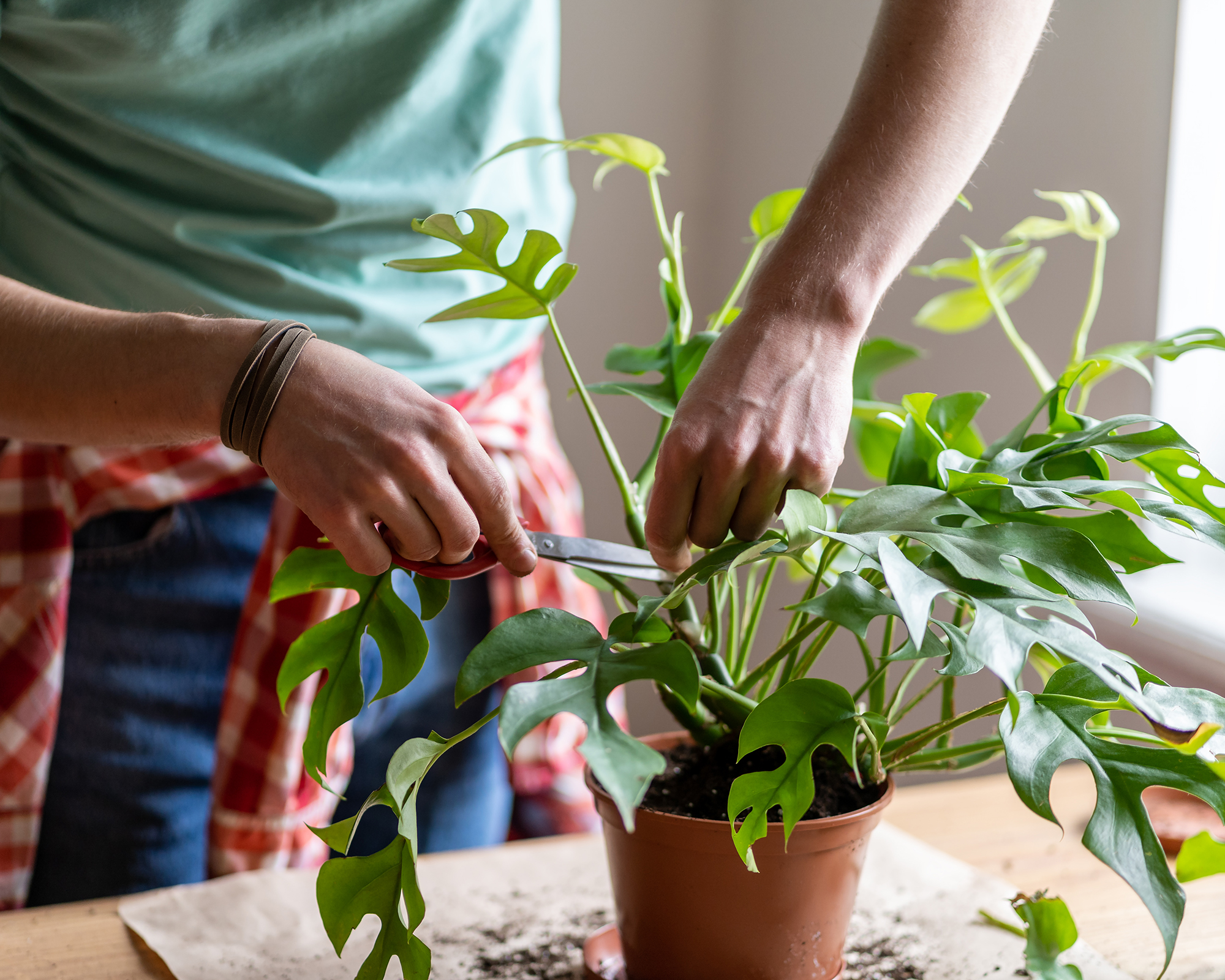
My Pre-Indoor Pruning Routine:
- Remove all yellowed, damaged, or dead leaves.
- Trim leggy stems just above a node to encourage bushier growth.
- Use sharp, sterilized pruning shears to avoid spreading disease.
Pruning keeps plants compact and helps them adapt better to limited indoor light.
👉 Think of it like giving your plants a fresh haircut before school picture day.
7. Refresh Pots and Soil for Healthy Roots
Finally, I always check the condition of the pot and soil before moving indoors.
Things I Look For:
- Clogged drainage holes → can cause root rot indoors.
- Compacted soil → prevents roots from breathing.
- Salt or mineral buildup → looks like a white crust on the soil surface.
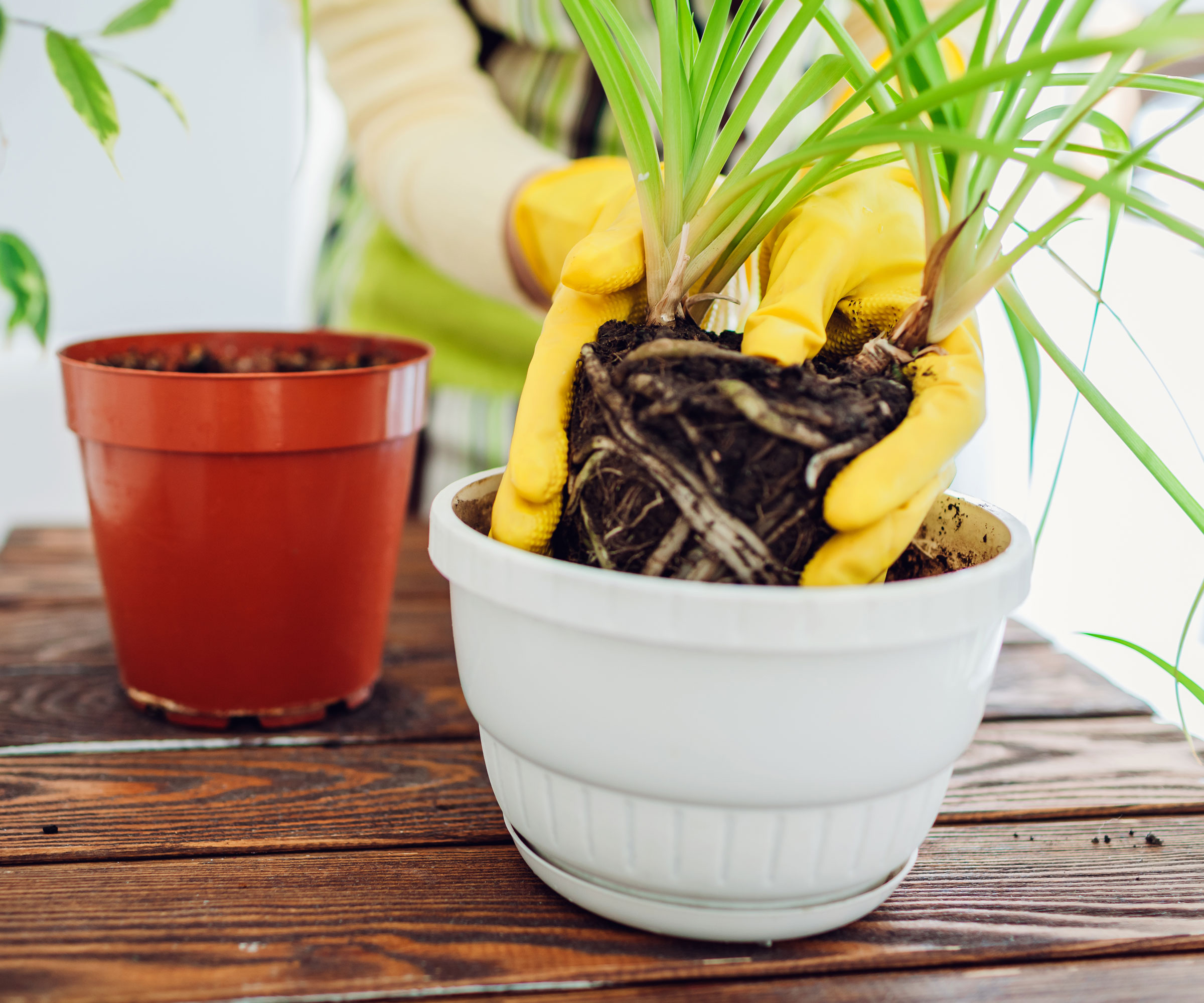
What I Do:
- Repot if the plant is root-bound.
- Add a layer of fresh potting mix on top.
- Test the soil pH with strips to ensure it’s within the ideal range.
For most houseplants, a slightly acidic soil (pH 6.0–6.5) works best.
👉 Healthy soil = healthy plant. A quick refresh ensures strong growth indoors.
Common Mistakes to Avoid When Bringing Plants Indoors
Even experienced gardeners make mistakes. Here are a few pitfalls I learned the hard way:
- Bringing in plants too late → sudden frost can damage them.
- Skipping pest checks → one infested plant can ruin your entire collection.
- Placing plants near heating vents → dry air stresses them.
- Overwatering indoors → growth slows down, so water less than summer.
- Ignoring humidity needs → tropical plants often need a humidifier indoors.
Extra Tips for a Smooth Transition
- Group plants together indoors to raise humidity naturally.
- Rotate pots weekly so plants get even light.
- Fertilize lightly — plants slow their growth indoors, so avoid heavy feeding.
- Use humidity trays under pots for moisture-loving species like ferns.
- Track temperature fluctuations — avoid drafts or cold windowsills.
Conclusion: Preparing Houseplants for Winter Success
Bringing houseplants indoors for winter doesn’t have to be stressful. By following these seven steps — from pest inspections to pruning and soil checks — you set your plants up for a successful transition.
Remember: houseplants thrive when you plan ahead, give them gentle acclimation, and pay attention to their changing needs indoors. With a little care, your greenery will not only survive but also stay lush and vibrant until spring.
So the next time the nights turn chilly, don’t just drag your plants inside — give them the full VIP treatment. Your winter jungle will thank you with healthy growth and beautiful foliage all season long. 🌿


1 thought on “I Always Do These 7 Things When Bringing Houseplants Back Indoors — Plant Expert’s Proven Tips for a Smooth Transition”
Pingback: Garden Patio Ideas – Plant Expert Shares Vital Tips for a Smooth Transition - Garden Luminous Tales